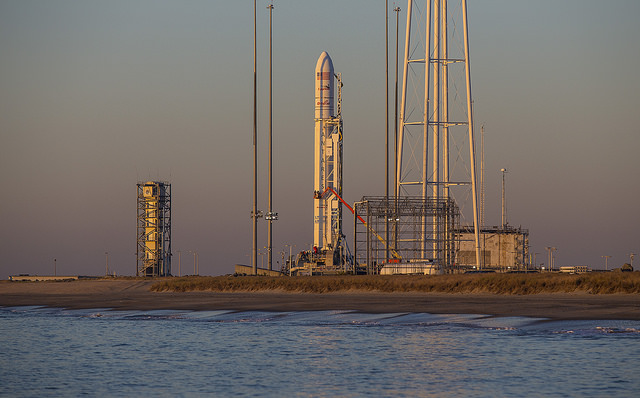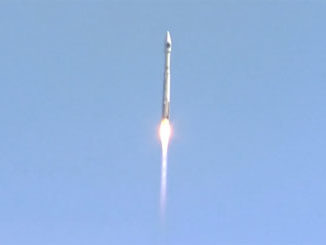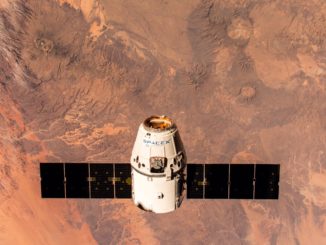
The first pair of new Russian main engines for Orbital ATK’s modernized Antares rocket has arrived at the company’s Virginia launch base as engineers prepare to return the commercial booster to flight after a catastrophic failure last year.
The two kerosene-fueled RD-181 engines arrived at Wallops Island, Virginia, in July, according to David Thompson, Orbital ATK’s president and CEO.
Speaking Thursday in a quarterly conference call with investment analysts, Thompson said repairs to the Antares launch pad in Virginia should be complete by late September or early October.
In a separate announcement Thursday, Virginia Gov. Terry McAuliffe said the state of Virginia, NASA and Orbital ATK have each agreed to contribute $5 million to pay for the repairs to the Antares launch complex.
Launch pad 0A, which sits on NASA property but is owned by the Virginia Commercial Space Flight Authority, sustained about $15 million in damage when an Antares rocket suffered an engine failure moments after liftoff Oct. 28, 2014.
The booster crashed back on the launch complex, toppling two of the pad’s lightning masts and leaving a crater near the rocket’s launch mount.
The crash destroyed an Orbital ATK Cygnus supply ship carrying cargo to the International Space Station under contract to NASA.
Orbital ATK officials said the company would redesign the Antares rocket’s first stage and stop using AJ26 main engines originally manufactured for the Soviet Union’s ill-fated N1 moon rocket program. The engines, known as the NK-33 in Russia, were imported to the United States in the 1990s and modified by Aerojet Rocketdyne for flight on U.S. launchers.
NASA Administrator Charlie Bolden told the space agency’s advisory council in late July that the investigation into last year’s Antares failure was complete and submitted to NASA and the Federal Aviation Administration, which has regulatory responsibility for commercial rocket launches. The report should be released publicly soon, Bolden said.
Orbital ATK purchased at least 20 newly-manufactured RD-181 rocket engines to replace the AJ26. The engines burn the same liquid propellant mixture, minimizing changes to the already-built Antares first stages.
The engine change will give the Antares rocket additional lift capacity, providing a combined 820,000 pounds of thrust at full throttle, more than the twin-engine AJ26 engine configuration could generate.
The RD-181 engine is based on the RD-191 powerplant used on Russia’s new Angara rocket. The single-nozzle engine selected to fly on the Antares rocket is also similar to the dual-nozzle RD-180 engine, which powers United Launch Alliance’s Atlas 5 launcher.
The first shipment of two RD-181 engines arrived at Wallops in July from NPO Energomash of Khimki, Russia. All other rocket hardware needed for the next Antares launch will be delivered to Wallops by mid-August, according to Blake Larson, Orbital ATK’s chief operating officer.
“At present, we are in the process of integrating the new engines into the Antares airframe,” Thompson said. “That work is expected to be completed within just the next few days, and then we’ll begin testing, which will continue through the fall. That also represents a significant risk reduction opportunity if things go well.”
Antares rockets are assembled horizontally inside a hangar about a mile north of the launch pad at Wallops.
Thompson said the return-to-flight mission should be ready for takeoff in early 2016 on another resupply flight to the space station. Officials previously said the launch is targeted for March 2016.
But first engineers will transfer the rocket to the Antares launch pad as soon as December for ground tests and a hold-down firing to demonstrate the new RD-181 main engines.
In the meantime, Orbital ATK is preparing a Cygnus cargo craft for launch Dec. 3 aboard an Atlas 5 rocket. Orbital contracted with ULA for the Atlas 5 launch to keep resupply missions going while the Antares booster is grounded.
Email the author.
Follow Stephen Clark on Twitter: @StephenClark1.



